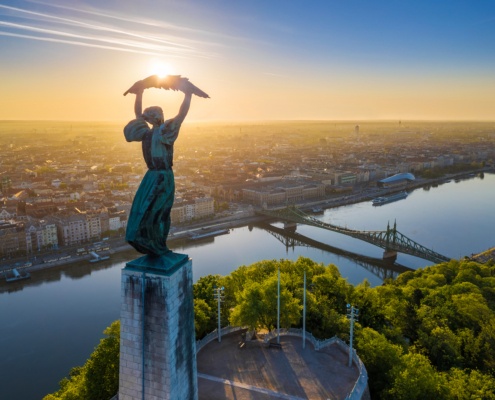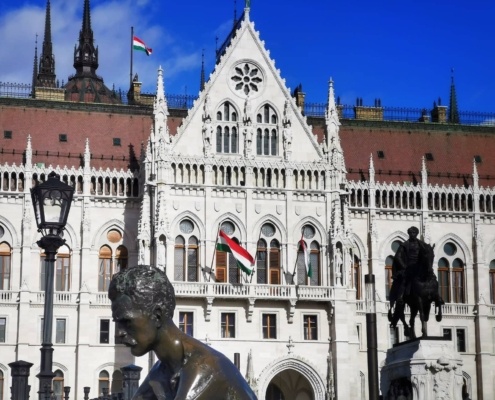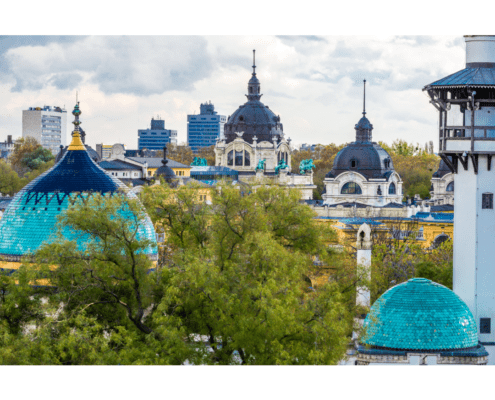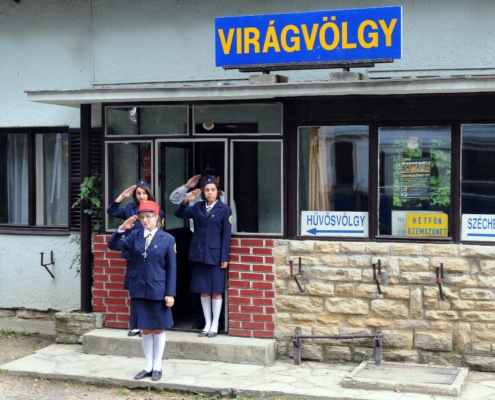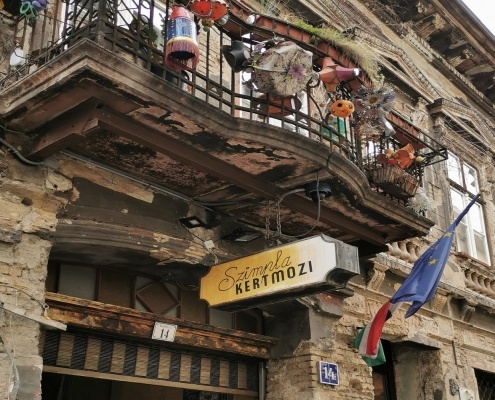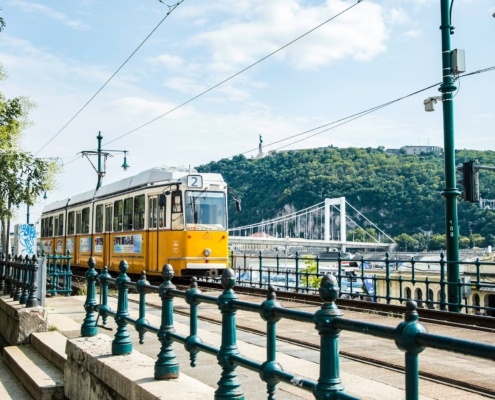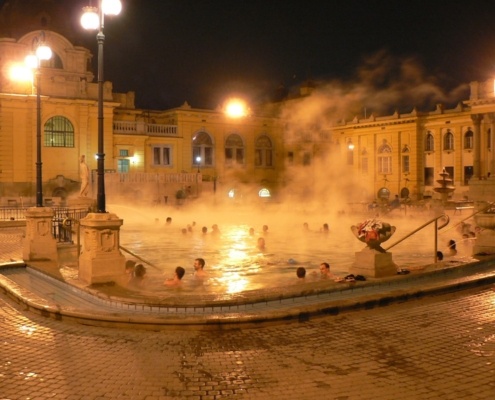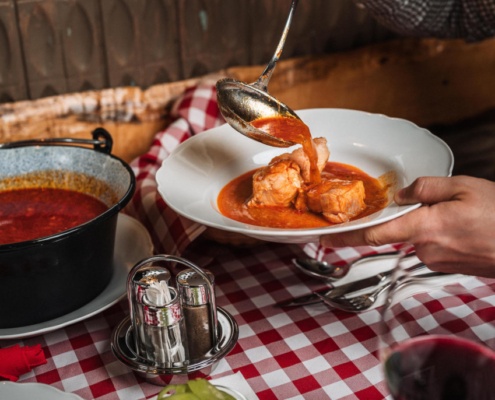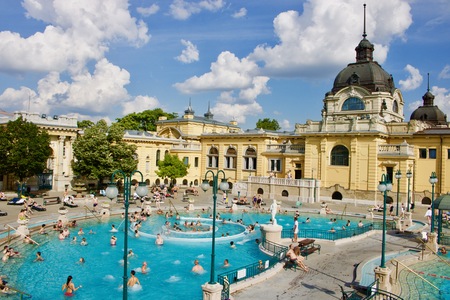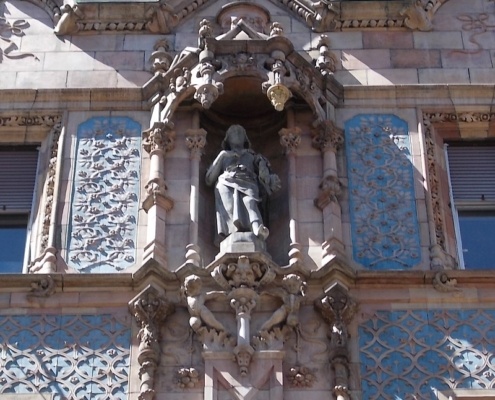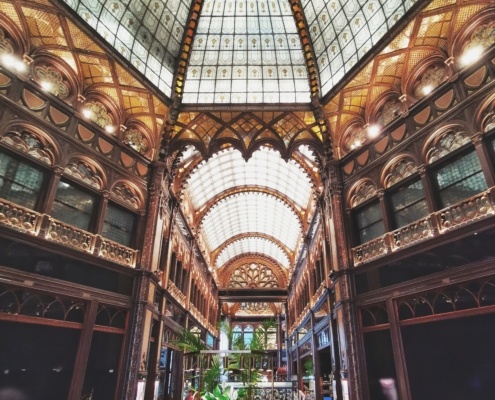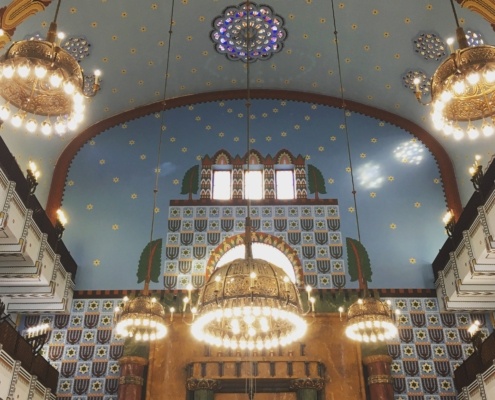Active Travel in Budapest: The Ultimate Sports & Fitness Guide
Active travel in Budapest is one of the best ways to discover this beautiful city. This is the perfect town for sports enthusiasts who want to stay active while exploring! Whether you’re into running, swimming, cycling, motorsports, or winter sports, the city has something to offer year-round. Here’s your go-to guide for the best sporting activities, events, and places to stay fit in Budapest.
Join Our Free Daily Guided Group Walks!
Get the perfect mix of sightseeing and exercise with our free daily guided group walks! Explore the best of Pest and Buda, taking in stunning historical landmarks and beautiful parks—all while getting your daily steps in.
Tour Details:
- Distance: Approx. 2 km
- Duration: 2 hours
For those who love to explore on their own, we also recommend two scenic self-guided walking routes along both sides of the Danube River:
Pest Side: Walk from the Grand Central Market at the Liberty Bridge (Szabadság híd) to the Parliament, passing the Danube Promenade, Chain Bridge, and Shoes on the Danube Monument.
Buda Side: Start from Batthyány tér, following the river to the Liberty Bridge, passing Castle Garden Bazaar, Rudas Thermal Baths, Gellért Baths, and the Cave Church.
Please note: These self-guided routes are not part of our free tours.

Best Parks and Running Trails for Active Travel in Budapest
Budapest is home to numerous lush parks and scenic riverside promenades along the Danube, making it an excellent city for running, jogging, and outdoor fitness. If you’re looking for dedicated running tracks, the city’s three major islands offer great options:
- Margaret Island – A green oasis in the heart of Budapest, featuring a 5.3 km rubberized running track with stunning river views.
- Óbuda Island – A quieter, nature-focused running destination, perfect for those seeking a more peaceful environment.
- Kopaszi Gát – Located in Budapest’s 11th district, just south of the Southern Connecting Railway Bridge (Déli összekötő vasúti híd), this scenic 900-meter-long peninsula extends into the Danube River, offering a tranquil spot for jogging and relaxation.
Outdoor Gyms and Fitness Spots in Budapest
If you enjoy bodyweight training, Budapest has several outdoor gyms with free access to high-quality exercise equipment. Here are our top picks:
- Feneketlen-tó – A scenic lakeside setting featuring a 400-meter running track and a well-maintained outdoor gym.
- Bikás Park – Home to an 800-meter running track and excellent outdoor fitness facilities.
- Tabáni Szabadidőpark – Offers a spectacular view of Buda Castle Hill, including the Royal Palace and Matthias Church, making your workout even more enjoyable.
Looking for more? Find free sports parks and courts across Budapest, district by district, at: freesportparks.hu.
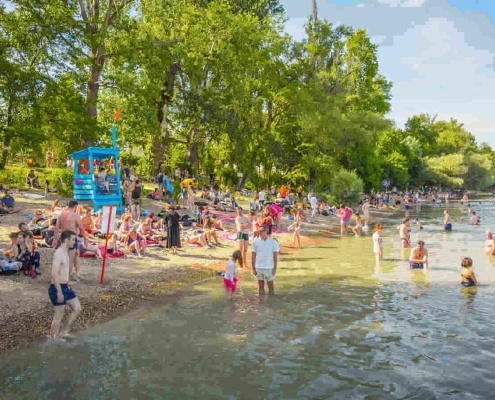
Summer Sports Activities in Budapest
During the summer, Budapest transforms into a paradise for water sports and outdoor adventures. Whether you’re looking to explore the Danube by kayak or relax at a riverside beach bar, the city has something for everyone.
Kayaking & Canoeing on the Danube
One of the best spots for kayak and canoe rentals is Béke Csónakház at Római Part, where you can choose from beginner-friendly kayaks to professional racing models. Rental prices start at 6,200 HUF per day for a 4-person canoe, making it an accessible and fun way to experience the Danube.
Beaches & Waterfront Bars
The Római Part area is known for its bohemian beach bars, direct waterfront access, and a private dock for water sports enthusiasts. Whether you want to cool off in the Danube, sip a refreshing drink by the shore, or try stand-up paddleboarding, this lively riverside destination is the perfect summer escape.
Winter Sports in Budapest
When winter rolls around, Budapest transforms into a winter wonderland! The biggest ice rink in Europe, City Park Ice Rink, located near Heroes’ Square, is a must-visit for those looking to enjoy some outdoor skating.
Top Sports Events for Active Travel in Budapest 2025
Budapest isn’t just for active travelers—it’s also a hub for international sporting events. Whether you’re a participant or a spectator, here are the must-see events of 2025:
Running Events
- Vivicittá Half Marathon – April 12-13
- Budapest Half Marathon – September 7
- Budapest Marathon – October 11-12
Motorsports
- Formula 1 Hungarian Grand Prix – August 1-3
Experience the high-speed excitement at the Hungaroring, one of F1’s most legendary circuits!
Cycling Events
- Tour de Hongrie in Budapest – May 14
Watch professional cyclists race through Budapest and across Hungary. - Bike Budapest Parade – April 20
Join the Bike Budapest Parade for a fun ride through the city!
Best Swimming Pools for Active Travel in Budapest
- Hajós Alfréd National Swimming Pool – A historical venue perfect for swimming enthusiasts.
- Komjáthy – Császár Swimming Pool – Great for both recreational and professional swimmers.
- Duna Arena – A world-class facility hosting international swimming competitions.
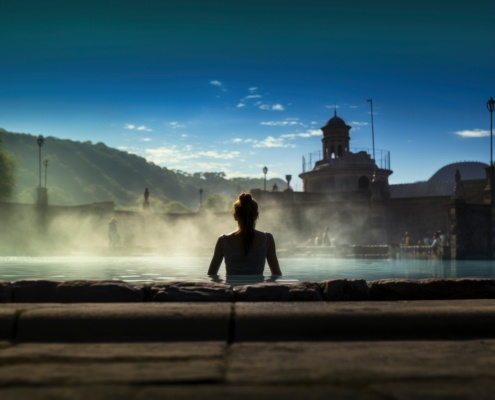
Relax and Recover After Your Active Adventures
After an action-packed day, unwind at one of Budapest’s world-famous thermal baths:
- Lukács Thermal Bath – One of the most authentic thermal baths, featuring both indoor and outdoor pools. Mostly visited by locals—psst… keep this a secret! Entrance fee: from 5,100 HUF.
- Széchenyi Thermal Bath – Ideal for post-workout relaxation, offering a mix of thermal pools and saunas. Entrance fee: from 12,500 HUF.
- Gellért Baths – A stunning Art Nouveau spa with elegant pools and a truly unique atmosphere. Entrance fee: from 12,500 HUF.
Recharge, relax, and soak in the healing waters of Budapest!
No matter your sport of choice, Active Travel in Budapest offers an unforgettable experience. From thrilling Formula 1 races to scenic running trails and world-class swimming pools, the city has it all. Whether you’re competing, cheering, or staying active while exploring, Budapest is ready to welcome you!






